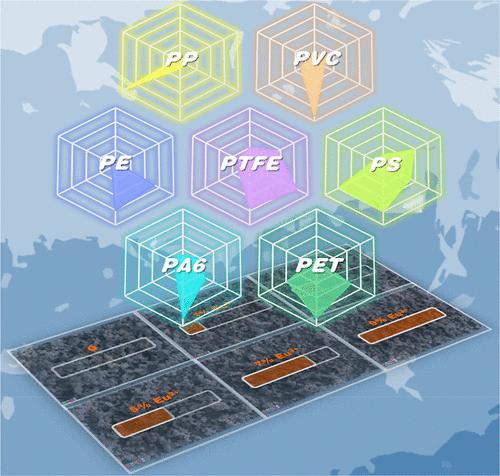Novel Pyrolysis-Assisted Cataluminescence System for Fingerprint Discrimination of Various Microplastics
IF 6.7
1区 化学
Q1 CHEMISTRY, ANALYTICAL
引用次数: 0
Abstract
As emerging pollutants, microplastics are pervasive in marine, terrestrial, and atmospheric environments as well as human tissues due to their small size, large specific surface area, and strong adsorption capacity. Consequently, developing efficient and rapid methods for identifying and differentiating microplastics is critical. Herein, a novel pyrolysis-assisted cataluminescence (CTL) sensor array was constructed, capable of efficiently distinguishing seven distinct types of microplastic samples. By pyrolyzing microplastics at high temperatures into small molecular compounds and introducing them into the CTL sensor array, which was based on 0–9% Eu3+-doped LaAlO3 as sensing materials, the system achieved a response time of no more than 2 s and an average recovery time of approximately 7 s. Through the integration of thermodynamic (signal-to-noise ratio) and kinetic (response time) factors from the CTL response curves, unique fingerprint patterns were generated, enabling high-throughput and rapid differentiation of multiple microplastics. Mechanistic studies revealed that the doping with Eu3+ ions played a dominant role in regulating the CTL signal. Different microplastic samples generated distinct types and concentrations of reaction intermediates during the pyrolysis-assisted CTL process, leading to variations in luminescence efficiency and thus forming unique fingerprint patterns. The proposed front-end pyrolysis combined with the back-end CTL method provided valuable insights for the rapid differentiation of structurally complex and low-reactive emerging pollutants, particularly nonvolatile solid samples, thereby expanding the application scope of CTL detection.

新型热解催化发光体系用于各种微塑料指纹鉴别
微塑料作为新兴的污染物,由于其体积小、比表面积大、吸附能力强等特点,广泛存在于海洋、陆地、大气环境以及人体组织中。因此,开发有效和快速的方法来识别和区分微塑料是至关重要的。本文构建了一种新型热解辅助催化发光(CTL)传感器阵列,能够有效区分七种不同类型的微塑料样品。通过在高温下将微塑料热解成小分子化合物,并将其引入以0-9% Eu3+掺杂LaAlO3为传感材料的CTL传感器阵列中,该系统的响应时间不超过2 s,平均恢复时间约为7 s。通过整合CTL响应曲线中的热力学(信噪比)和动力学(响应时间)因素,生成了独特的指纹图谱,实现了多种微塑料的高通量和快速区分。机制研究表明,Eu3+离子的掺杂在调节CTL信号中起主导作用。不同的微塑料样品在热解辅助CTL过程中产生不同类型和浓度的反应中间体,导致发光效率的变化,从而形成独特的指纹图谱。本文提出的前端热解结合后端CTL方法,为快速区分结构复杂和低反应性的新兴污染物,特别是非挥发性固体样品提供了有价值的见解,从而扩大了CTL检测的应用范围。
本文章由计算机程序翻译,如有差异,请以英文原文为准。
求助全文
约1分钟内获得全文
求助全文
来源期刊

Analytical Chemistry
化学-分析化学
CiteScore
12.10
自引率
12.20%
发文量
1949
审稿时长
1.4 months
期刊介绍:
Analytical Chemistry, a peer-reviewed research journal, focuses on disseminating new and original knowledge across all branches of analytical chemistry. Fundamental articles may explore general principles of chemical measurement science and need not directly address existing or potential analytical methodology. They can be entirely theoretical or report experimental results. Contributions may cover various phases of analytical operations, including sampling, bioanalysis, electrochemistry, mass spectrometry, microscale and nanoscale systems, environmental analysis, separations, spectroscopy, chemical reactions and selectivity, instrumentation, imaging, surface analysis, and data processing. Papers discussing known analytical methods should present a significant, original application of the method, a notable improvement, or results on an important analyte.
 求助内容:
求助内容: 应助结果提醒方式:
应助结果提醒方式:


